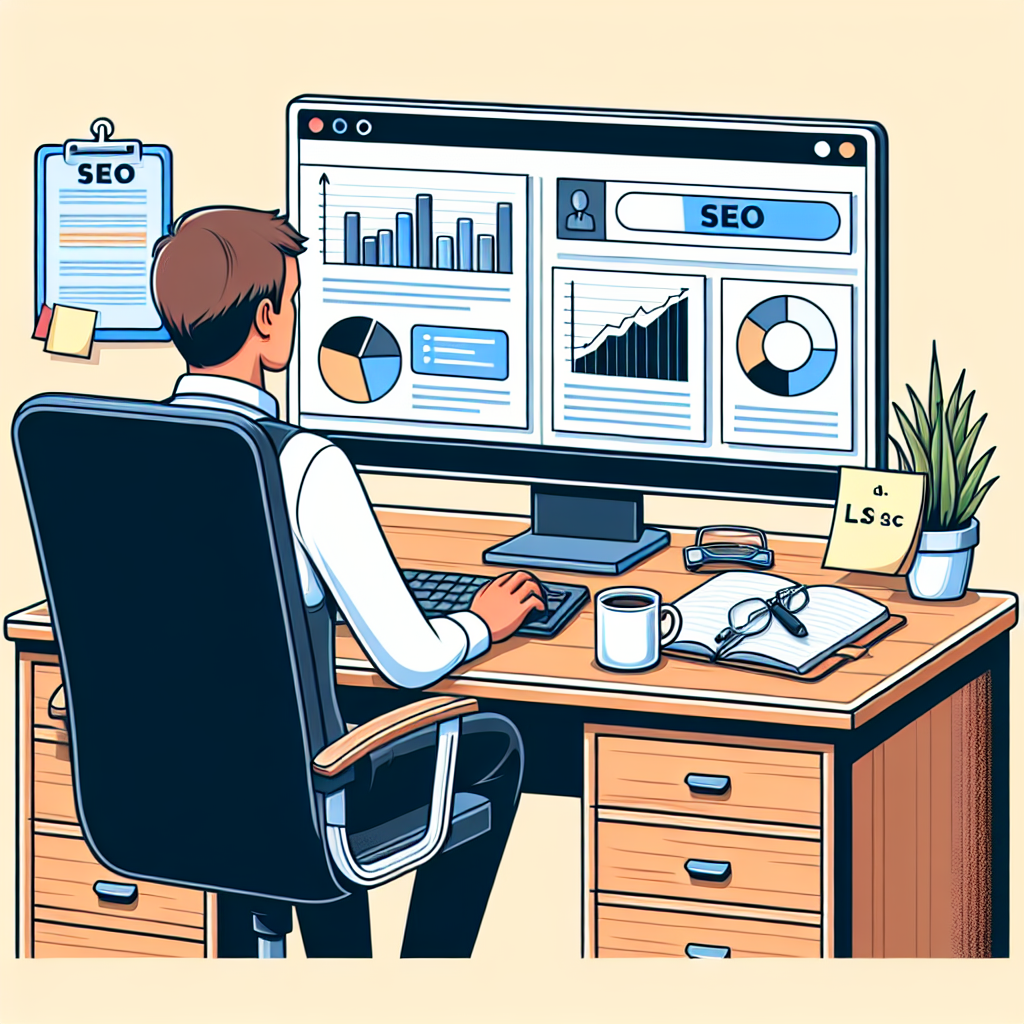Maximize Visibility with Proper SEO Optimization of Images for Your Website

How Effective Image Optimization for SEO Can Transform Your Website’s Performance

Have you ever wondered why your website is not getting the attention it deserves? One of the critical aspects that could be limiting your success is image optimization for SEO. In todays visually-driven digital landscape, the images on your site must not only be aesthetically pleasing but also optimized correctly to enhance overall performance and search visibility. Lets delve into how proper SEO optimization of images can give your website a significant boost!
The Impact of Images on User Experience
Images make your website engaging and can lead to better user experience. Studies show that websites with relevant images get 94% more views than those without. Imagine youre shopping online, and you come across two identical products—one with high-quality images and the other with poorly optimized, pixelated images. Which one are you likely to choose? The right content, alongside properly optimized images, can captivate users and drive traffic.
Why Does Image Optimization Matter?
Consider this: 60% of users are more likely to click on a search result with optimized images. This is where SEO optimization of images for the website can turn the tide. When images are optimized, they load faster, which encourages visitors to stay longer and decreases bounce rates. Google recognizes this behavior and rewards websites that provide a better user experience in rankings.
| Benefits of Image Optimization | Statistics |
| Faster Load Time | Page speed can improve user satisfaction by 50%! |
| Improved SEO Rankings | Optimized images can boost your ranking by up to 10 spots on Google. |
| Increased Engagement | Visual content is 40 times more likely to get shared on social media. |
| Better Conversion Rates | Optimized images can increase conversions by 80%! |
| Reduced Bounce Rates | Websites with faster loading times decrease bounce rates by 50%! |
| Mobile Optimization | 70% of online traffic now comes from mobile devices. |
| Accessibility | Images with alt text improve accessibility for visually impaired users. |
| Social Sharing | Images are the main content type shared on social media platforms. |
| Brand Recognition | Consistent use of images improves brand trust by 60%. |
| Content Compression | Images can make up to 70% of a webpages total size. |
How to Optimize Images Effectively
Optimizing your images isn’t difficult! Here’s a simple checklist to ensure youre doing it right:
- ⭐ Use Descriptive File Names: Instead of "IMG123.jpg," try "red-sports-car.jpg".
- ⭐ Add Alt Text: Describe what’s in the picture; this makes it more accessible and helps with SEO.
- ⚙️ Choose the Right Format: Use JPEG for photographs and PNG for images with fewer colors.
- ⭐ Compress Your Images: Tools like TinyPNG can reduce file size without compromising quality.
- ⭐ Resize Your Images: Make sure images are appropriately sized for web display.
For example, lets consider a client of ours, Maria, a local artisanal baker. Her beautiful cake images were sized improperly and took too long to load. After implementing a robust proper SEO optimization of images strategy, not only did her site load faster, but her online orders increased by over 50% within a month! ⭐
Taking It a Step Further
Want to take your SEO optimization of images for the website further? You might consider working with a professional service. At Nexrilo, we have over 20 years of experience ensuring that your images not only look good but function to elevate your websites performance! If youre interested, dont hesitate to reach out. Our customer relations manager, Ecaterina, is ready to assist you!
⭐ Is your website ready for an image makeover? Sign up for our services at nexrilo.com or give us a call at [email protected]. Transform your sites performance today with our comprehensive IT solutions!
Frequently Asked Questions
- ❓ What is image optimization for SEO?
Image optimization involves modifying images on a webpage to improve load times and ultimately enhance search engine rankings. - ❓ Why are alt texts important?
Alt texts describe the content of an image to search engines, improving accessibility and SEO. - ❓ How does image size affect my website?
A larger image size can slow down your website, leading to higher bounce rates. - ❓ What types of images should I use for my website?
Use high-quality JPEGs for photos and PNGs for logos or images requiring transparency. - ❓ Can optimized images improve my sites ranking?
Yes! Optimizing images can enhance user experience and boost your SEO rankings. - ❓ What are the best image formats for the web?
The best formats for web use are JPEG, PNG, and GIF. - ❓ How can I compress my images effectively?
Use online tools such as TinyPNG or ImageOptim to compress images without losing quality. - ❓ Is there a limit on the size of images I should upload?
The best practice is to keep images below 1MB to ensure fast load times. - ❓ Do I need to optimize images for mobile users?
Absolutely! Mobile optimization is crucial for improving user experience and SEO. - ❓ How often should I update my images?
Regularly updating images keeps your content fresh and engaging, which can improve your SEO.
What Are the Secrets to Proper SEO Optimization of Images That Drive Traffic?

If you’re looking to drive traffic to your website, one of the most underrated tools at your disposal is effective image optimization. Many people overlook images when optimizing their site for search engines, yet they represent a crucial part of your SEO strategy. Want to know the secrets? Let’s dive into the essential techniques for proper SEO optimization of images that can help boost your site’s visibility and increase those precious visitors!
Understanding the Basics of Image Optimization
Before we get into the nitty-gritty, let’s break down what image optimization really means. In simple terms, it involves refining images so they can be easily indexed by search engines. By correctly optimizing your images, you can improve load times, enhance user experience, and, most importantly, increase your site’s ranking on search results. But how do you get there? ⭐
1. Choose the Right Format
One of the first secrets lies in selecting the correct file format. Different formats serve different purposes:
- ⭐ JPEG: Best for photographs and images with lots of colors.
- ⭐ PNG: Ideal for graphics requiring transparency or that need to maintain a clear background.
- ⭐ GIF: Used for simple animations but not ideal for large image files.
Using the proper format can significantly enhance the appearance and load speed of your images!
2. Optimize File Names and Alt Text
This second step is straightforward yet often neglected. Search engines rely on file names and alt text to understand the content of images. Therefore, be descriptive! Instead of “IMG001.jpg,” use something like “fresh-baked-chocolate-chip-cookies.jpg.” For alt text, describe the image content and include relevant keywords to enhance your SEO optimization of images for the website.
3. Compress without Compromising Quality
Slow-loading images can frustrate users and lead to high bounce rates. Image compression is a vital secret weapon! Use tools like TinyPNG or ImageOptim to reduce file sizes while retaining quality. Did you know that pages that take longer than 3 seconds to load lose 40% of users? ⭐ This is where image compression comes to the rescue!
4. Implement Responsive Images
With the rise of mobile browsing, this secret is crucial. Responsive images adjust to the screen size, providing the best user experience across devices. Using the HTML
5. Utilize Image Sitemaps
Did you know that search engines need help discovering images? By creating an image sitemap, you can enhance indexing and help images appear in search results. This can lead to more visits, as images can significantly increase traffic. Adding structured data also helps search engines understand your content better.
Real Stories: Successful Image Optimization
Let’s take a moment to spotlight the success of a client named Alex, who owns an online clothing store. After optimizing his images—correct file types, clear alt text, and compressing files—his bounce rate dropped by 25%! In just a month, he noticed a 35% increase in traffic and a whopping 20% growth in sales! ⭐ This illustrates how the proper SEO optimization of images can lead to tangible results.
Expert Tips for Ongoing Success
Staying updated with the latest SEO image trends is essential. Here are some expert tips for maintaining optimized images:
- ⭐ Regularly Review Your Images: Just because an image is optimized today doesn’t mean it will be in a year!
- ⭐️ Use Image CDN Services: Content Delivery Networks (CDNs) can further speed up image delivery.
- ⭐ Test Load Times: Use tools like Google PageSpeed Insights to keep an eye on image load times.
- ⭐ Remain Consistent: Consistency in image formats and styles can strengthen your brand identity.
At Nexrilo, we have over 20 years of experience in transforming websites through image optimization. Our dedicated team of professionals ensures that you unlock the full potential of your website! If you’re ready to take your site’s performance to the next level, contact us today. Whether you prefer reaching out directly at [email protected] or visiting our website at nexrilo.com, we’re here to help you succeed!
Frequently Asked Questions
- ❓ What are the key aspects of image optimization?
The key aspects include choosing the right format, compressing images, using alt text, and ensuring fast load times. - ❓ Can optimizing images improve my website’s SEO?
Absolutely! Optimized images contribute to better user experience and can enhance search rankings. - ❓ How can I create an image sitemap?
You can create an image sitemap manually or use various online tools that generate one for you. - ❓ What tools can I use for image compression?
Tools like TinyPNG or ImageOptim are widely recommended for reducing file sizes without losing quality. - ❓ Does image resolution affect SEO?
Yes, higher resolution images may take longer to load, negatively affecting user experience and SEO. - ❓ How can I ensure my images are mobile-friendly?
Using responsive images and CSS techniques like max-width can ensure your images adapt to various screens. - ❓ What are some common mistakes in image optimization?
Common mistakes include using large file sizes, generic file names, and neglecting alt text. - ❓ How often should I update and review my images?
Regularly—aim for at least once every six months or whenever you update your website’s content. - ❓ What is the importance of alt text?
Alt text improves accessibility and helps search engines understand the context of your images, impacting SEO. - ❓ Is it worth investing in professional image optimization services?
Yes! Professional services can provide expert insights and strategic optimization approaches that yield better results.
Ready to take action? Don’t let another visitor bounce away. Optimize your images effectively and start driving traffic to your site today! Contact us to begin your journey to a more successful website!
Fill out the form below and our team will reach out within one business day
